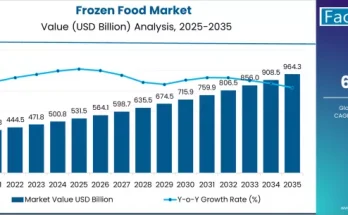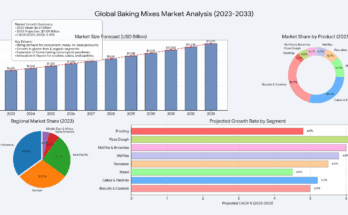The global Organic Water Soluble Fertilizers Market is poised for robust expansion, projected to increase from USD 1.1 billion in 2025 to USD 1.9 billion by 2035, reflecting an absolute growth of USD 0.8 billion and a compound annual growth rate (CAGR) of 5.6%. This impressive 72.7% rise underscores the industry’s accelerating shift toward sustainable and high-efficiency agricultural inputs.
Summary
The Organic Water Soluble Fertilizers Market is expected to grow 1.7X between 2025 and 2035, driven by rising adoption of sustainable agriculture, the increasing global preference for organic produce, and expanding investments in precision agriculture technologies. Farmers, agribusinesses, and fertilizer manufacturers are responding to environmental regulations, consumer trends, and soil health priorities by embracing water soluble organic fertilizers as an essential component of modern, eco-efficient farming systems.
Market Overview
Globally, the Organic Water Soluble Fertilizers Market is gaining traction as growers seek solutions that combine nutrient efficiency, environmental responsibility, and organic certification compliance. Traditional fertilizers have been criticized for their negative environmental impact, including soil degradation and groundwater contamination. In contrast, organic water soluble fertilizers provide targeted nutrient delivery while maintaining soil fertility and ecological balance.
Between 2025 and 2030, the market will rise from USD 1.1 billion to USD 1.4 billion, representing 37.5% of total decade-long growth. The surge in demand aligns with government incentives promoting organic agriculture, the proliferation of hydroponic and greenhouse farming, and the growing need for precision-based nutrient management.
Key Market Drivers
-
Sustainable Agriculture Adoption:
Rising global awareness of soil health, climate change, and sustainable food systems is pushing both smallholder and industrial farmers to replace chemical fertilizers with organic alternatives. -
Precision Fertilization Techniques:
The integration of fertigation and foliar application methods allows farmers to deliver nutrients more effectively. This precision approach minimizes waste, reduces leaching, and ensures optimal plant uptake. -
Growing Organic Food Demand:
Consumer preference for chemical-free, nutritious produce is prompting large-scale shifts toward certified organic crop systems, strengthening long-term demand for water soluble organic fertilizers. -
Technological Innovation:
Advancements in formulation science are enabling manufacturers to develop high-solubility, bioavailable, and balanced nutrient blends, particularly suited for hydroponic, vertical, and greenhouse farming systems.
Segmental Analysis
By Nutrient Type:
The NPK blends segment leads the Organic Water Soluble Fertilizers Market, commanding nearly 48% market share in 2025. NPK formulations deliver balanced nutrition critical for plant growth, offering consistent performance across fruits, vegetables, and field crops.
By Application Method:
Fertigation remains the dominant method, representing 54% of total applications in 2025. Its efficiency and compatibility with modern irrigation systems make it the preferred choice for both open-field and controlled-environment agriculture.
By Crop Type:
The fruits and vegetables segment holds over 52% share in 2025, supported by the expanding premium organic produce sector and rising consumer demand for nutrient-dense, pesticide-free foods.
Regional Insights
The USA leads the global Organic Water Soluble Fertilizers Market, registering a 6.6% CAGR through 2035, driven by large-scale adoption of organic farming, increased federal incentives, and investment in smart farming technologies. Mexico follows closely at 6.1% CAGR, fueled by modernization of agriculture and export-driven organic produce markets.
In Europe, countries like Germany (5.6%), France (5.4%), and the UK (5.2%) are advancing through sustainable agriculture initiatives, environmental regulations, and integration of smart fertigation systems. Meanwhile, Japan (4.9%) and South Korea (5.0%) continue to prioritize quality assurance and innovation in controlled-environment farming and hydroponic production.
Across the Asia-Pacific region, countries such as India and China are expected to witness significant growth due to large agricultural bases, rapid technology adoption, and increasing consumer awareness regarding sustainable food production.
Competitive Landscape
The Organic Water Soluble Fertilizers Market is characterized by high innovation and strong competition among global leaders.
-
ICL Group Ltd. leads with an 8.8% market share, focusing on precision-grade organic formulations and sustainable production methods.
-
Haifa Group emphasizes fertigation technologies and tailored nutrient solutions for high-value crops.
-
Yara International, K+S, SQM, and EuroChem are investing heavily in bioavailability research, nutrient optimization, and regional distribution networks to meet growing global demand.
Emerging players, including COMPO Expert, UPL, Coromandel International, and Valagro, are entering strategic partnerships to develop advanced formulations and expand access to global organic farming markets.
Browse Full Report : https://www.factmr.com/report/3524/organic-waterorganic-water-soluble-fertilizers-market
Opportunities and Future Outlook
From 2030 to 2035, the Organic Water Soluble Fertilizers Market will experience accelerated growth as precision agriculture, smart irrigation systems, and controlled environment agriculture become mainstream. Manufacturers are expected to focus on:
-
Developing advanced organic formulations for enhanced nutrient bioavailability
-
Expanding global production capacity through sustainable sourcing
-
Integrating AI and IoT technologies for nutrient delivery optimization
As global agriculture pivots toward sustainability, investors and agricultural enterprises have a strong opportunity to align with the market’s long-term growth trajectory.



